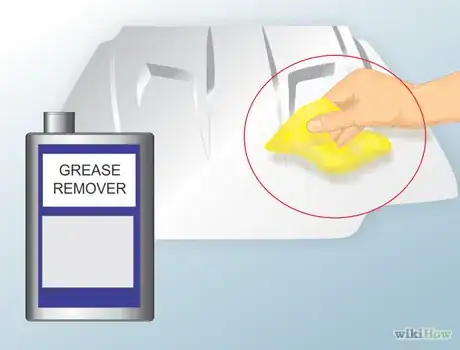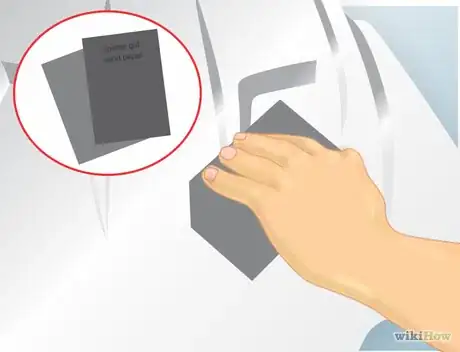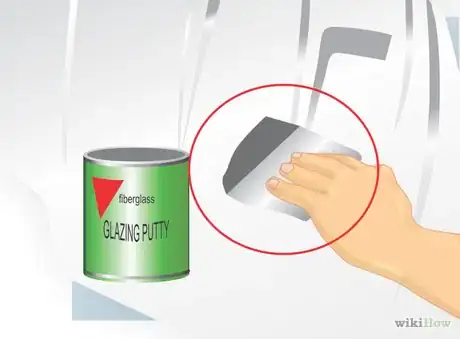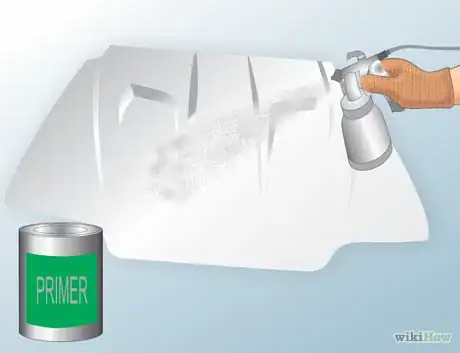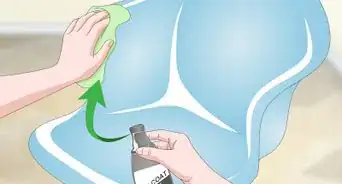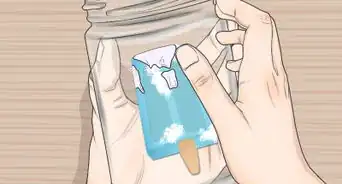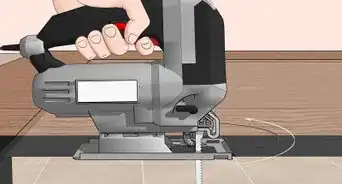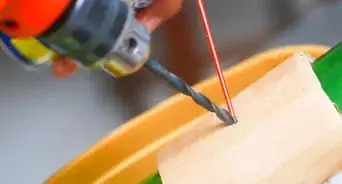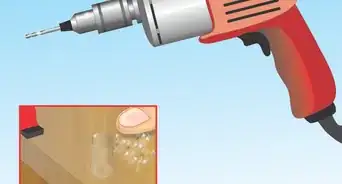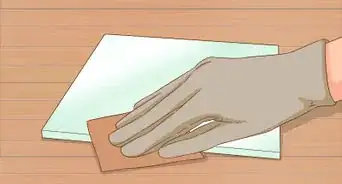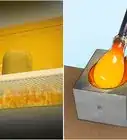This article was co-authored by Ryaan Tuttle. Ryaan Tuttle is a Home Improvement Specialist and the CEO of Best Handyman, Inc. in Boston, Massachusetts. With over 17 years of experience, he specializes in building home service businesses, focusing on creating scalable and efficient brands. With the help of his global team, the companies have achieved over 10+ million in sales and received recognition through magazine features, and enjoy partnerships with wikiHow and Jobber field service software. Boston Magazine and LocalBest.com have named Best Handyman Boston the Best Handyman in Boston. Ryaan holds Construction Supervisor and Home Improvement Contractor Licenses.
wikiHow marks an article as reader-approved once it receives enough positive feedback. In this case, 80% of readers who voted found the article helpful, earning it our reader-approved status.
This article has been viewed 201,295 times.
Fiberglass is a type of plastic that is impregnated with small glass fibers for reinforcement (it is also known as GRP, for glass-reinforced plastic). Fiberglass is lightweight, strong in both compression and tension, and easy to mold into intricate shapes. It was first introduced in the aircraft industry, and has since gained wide acceptance as a material for boat hulls, car bodies, and even residential construction. The special properties of fiberglass make it a bit tricky to sand into shape, and learning how to sand fiberglass requires a lot of preparatory work and patience.
Steps
-
1Allow the fiberglass to cure in the sun. If you are working with a new fiberglass component, it will have a thin layer of gelcoat on its surface. Gelcoat is an epoxy or resin-based compound that is used to line the molds when making fiberglass components. Before sanding, let the fiberglass sit out in the sun for 2 to 7 days to cure the gelcoat. This process releases any air pockets from the gelcoat that would cause problems when sanding and painting.[1]
-
2Assemble the fiberglass components, if applicable. If your project consists of multiple fiberglass components (like the body, doors, and hood of a car), assemble them before sanding or finishing. This will allow you to sand continuously between each component, creating a smooth, consistent joint.Advertisement
-
3Clean the entire fiberglass component with a wax and grease remover. Using this product is especially important when working with a new fiberglass component, as it is necessary to remove the release agent, the substance used to pry the component loose from its mold. Wax and grease remover can be purchased from automotive parts stores.[2]
-
4Sand the fiberglass using a coarse-grit sandpaper. For the first sanding pass, use either 80 or 100-grit sandpaper. Mount the sandpaper to a long sanding board for large, flat components. For smaller areas or areas with intricate curves, a rubber sanding block works well to follow the shape of the piece.[3]
- Never sand all the way through the gelcoat into the fiberglass itself. This causes 2 problems: it weakens the strength of the component, and it creates holes in the fiberglass that allow it to rupture through the paint later.
- The gelcoat can be used as a guide during the initial sanding. Sanding the gelcoat just enough will make its appearance dull, so when the entire component has lost its shine, you have sanded enough to allow the primer or paint to adhere.
-
5Fill any low spots in the fiberglass. To raise the profile of low spots in the surface, use a fiberglass glazing putty. Work the putty into the low spot, and then sand it away until the area is flush with the rest of the surface.[4]
-
6Apply primer to the fiberglass. Once the component has been sanded with coarse-grit sandpaper, apply the primer and allow it to set. Avoid using etching primer, as it won't adhere well to fiberglass.[5]
-
7Sand the finish using a fine-grit sandpaper. After the primer is set, sand the entire component again with a finer-grit sandpaper such as 180 or 220-grit. After this sanding, continue to apply primer or paint as desired, sanding between each application with a fine-grit sandpaper.[6]
Expert Q&A
-
QuestionWhat direction should I sand in?
 Ryaan TuttleRyaan Tuttle is a Home Improvement Specialist and the CEO of Best Handyman, Inc. in Boston, Massachusetts. With over 17 years of experience, he specializes in building home service businesses, focusing on creating scalable and efficient brands. With the help of his global team, the companies have achieved over 10+ million in sales and received recognition through magazine features, and enjoy partnerships with wikiHow and Jobber field service software. Boston Magazine and LocalBest.com have named Best Handyman Boston the Best Handyman in Boston. Ryaan holds Construction Supervisor and Home Improvement Contractor Licenses.
Ryaan TuttleRyaan Tuttle is a Home Improvement Specialist and the CEO of Best Handyman, Inc. in Boston, Massachusetts. With over 17 years of experience, he specializes in building home service businesses, focusing on creating scalable and efficient brands. With the help of his global team, the companies have achieved over 10+ million in sales and received recognition through magazine features, and enjoy partnerships with wikiHow and Jobber field service software. Boston Magazine and LocalBest.com have named Best Handyman Boston the Best Handyman in Boston. Ryaan holds Construction Supervisor and Home Improvement Contractor Licenses.
Home Improvement Specialist When you're sanding fiberglass, you're supposed to crosshatch your sanding. So you would essentially start from the top right corner and go to the bottom left corner, then go from the top left corner of the bottom right corner.
When you're sanding fiberglass, you're supposed to crosshatch your sanding. So you would essentially start from the top right corner and go to the bottom left corner, then go from the top left corner of the bottom right corner. -
QuestionI am working on chairs that were painted. I have removed the paint and want to continue with sanding. There is no gel coat that I can detect. How can I sand these to ready them for paint?
 Community AnswerMy suggestion is to sand by hand (not a machine) because it takes away less material. Use an extremely fine sandpaper, making strokes in the same direction as to minimize the appearance of marks. Also, make sure you wear a mask so you're not breathing in any particles.
Community AnswerMy suggestion is to sand by hand (not a machine) because it takes away less material. Use an extremely fine sandpaper, making strokes in the same direction as to minimize the appearance of marks. Also, make sure you wear a mask so you're not breathing in any particles. -
QuestionCan I use Bondo on fiberglass?
 Beth H.Community AnswerNo, you cannot. They are made up of different compounds and expand differently.
Beth H.Community AnswerNo, you cannot. They are made up of different compounds and expand differently.
Warnings
- When sanding fiberglass, make sure to wear safety glasses, gloves, a dust mask, and long sleeves and pants. Fiberglass dust can cause severe skin irritation and is very harmful if inhaled.⧼thumbs_response⧽
Things You'll Need
- Fiberglass component
- Wax and grease remover
- Cloth
- Coarse-grit sandpaper
- Long sanding block
- Rubber sanding block
- Fiberglass glazing putty
- Primer
- Fine-grit sandpaper
- Safety glasses
- Gloves
- Dust mask
- Long sleeves and pants
References
- ↑ https://www.fibreglast.com/product/fiberglass-repair-composite-repair/Learning_Center
- ↑ https://www.speedwaymotors.com/the-toolbox/fiberglass-preparation-tips/28637
- ↑ https://www.carid.com/images/duraflex/info/pdf/basic-fiberglass-preparation-process-before-painting.pdf
- ↑ https://www.fibreglast.com/product/fiberglass-repair-composite-repair/Learning_Center
- ↑ https://www.fibreglast.com/product/fiberglass-repair-composite-repair/Learning_Center
- ↑ https://www.finepaintsofeurope.com/paint_a_door.aspx


